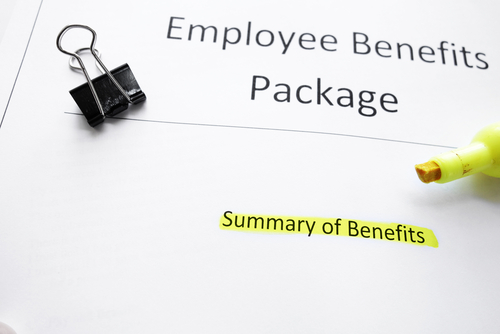Offering voluntary benefits can take costs off the shoulders of employers—and also attract new talent. Benefits expert Steve L. Adams advises companies to provide these benefits in a way that resonates with the modern employee … and then reap the rewards.
 |
Adams, who is president and CEO of Navera, provided the following analysis in an article written for HR.BLR.com®.
Multiple surveys attest to the power of voluntary benefits to retain and attract employees. That said, voluntary benefits are not the proverbial silver bullet.
Employers seeking the potential rewards from offering voluntary benefits need to understand that simply making these benefits available is not enough. Voluntary benefits require education and decision support that engage users and leave them feeling confident and comfortable with their decisions.
Recent surveys on the power of voluntary benefits to retain and recruit employees have found that:
- Seven out of 10 surveyed employers said they offer voluntary benefits to increase company loyalty, and 44 percent of employees strongly agree that having benefits customized to meet their needs would increase their loyalty, according to MetLife’s 12th Annual U.S. Employee Benefit Trends Study.
- Nearly one-half (46 percent) of surveyed employees said it is likely or very likely they would remain at their current employer primarily due to the voluntary products package offered, according to a survey by Harris Interactive on behalf of Transamerica Employee Benefits (TEB), a marketing unit of Transamerica Life Insurance Company.
- Almost one in three (27 percent) surveyed employers cited attracting employees as an important reason for offering voluntary benefits in Towers Watson’s 2013 Voluntary Benefits and Services Survey.
Considering legal insurance as part of your benefits package? Read the free best practices report, How Comprehensive Legal Insurance Works for Employers and Employees: Three Typical Scenarios. Download Here
Typical Enrollment Tools Not Enough
Traditional voluntary benefits enrollment tools—such as written documents, face-to-face meetings, and automated enrollment systems—are not proving effective with the 21st century workforce. Today’s workforce is unparalleled in its diversity and is populated by individuals accustomed to 24/7 access to all services and support via the Internet.
To effectively meet the demands of this diverse, connected population, employers must provide a world-class self-service customer experience. Most importantly, they need to be sure these tools engage employees on their terms and educate and advise them according to their individual context and personal circumstances.
Cloud-based education and decision-support tools are making it easier for employees to make well-informed decisions about purchasing voluntary benefits. Interactive tools present information that is personalized and relevant. These tools aim to augment or replace paper-based education, in-person meetings, and call-center support to make the education and decision-support process less onerous, less time-consuming, and less expensive.
The efficacy of these tools is critical to how engaged employees are in the benefits enrollment process as engagement is essential for meaningful enrollment levels and employee satisfaction with both the process and the products selected. Enabling successful self-service requires enrollment technologies to consider the system of engagement as well as the system of record (that is, a typical benefits administration system).
Comprehensive legal insurance works for anyone and everyone! Download the free best practices report, How Comprehensive Legal Insurance Works for Employers and Employees: Three Typical Scenarios. Learn More
Elements of a World-Class Self-Service Experience
A world-class customer-focused self-service benefits enrollment solution:
- Treats users as consumers,
- Presents all the information necessary for well-informed decisions,
- Provides information that is easy to understand and compelling,
- Is easy to access, effortless to navigate, and available 24/7,
- Is self-paced, driven by an employee’s previous experience or desire to learn more about specific products; employees are able to choose what they want to learn and the order in which they want to learn it;
- Entices or inspires employees to learn more,
- Provides a path of “guided choice,”
- Is personalized and relevant to the profile of individual employees and their families,
- Offers unbiased, impartial information; users are able to model scenarios relevant to them and their household;
- Integrates with existing enrollment systems and requires little or no IT investment,
- Is easy to maintain and modify as benefit programs and plans change, and
- Scales to support employer groups of all sizes.
In tomorrow’s Advisor, more on voluntary benefits, including three questions employers should ask themselves, plus we introduce the free white paper (courtesy of ARAG®), How Comprehensive Legal Insurance Works for Employers and Employees: Three Typical Scenarios.

Any tips on how to determine which voluntary benefits to offer?